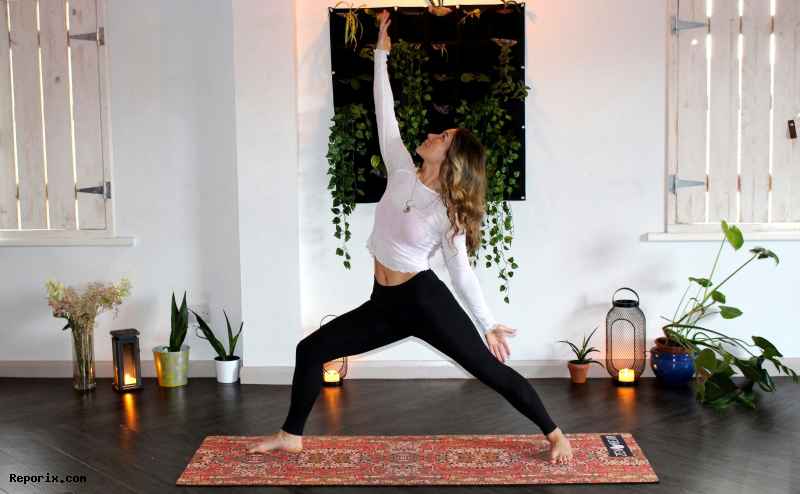Practicing yoga at home has become increasingly popular in recent years. As a flexible and cost-effective alternative to studio classes, it allows you to tailor your practice to your own schedule and space. But how do you create a meaningful and sustainable home yoga routine?
The good news: you don’t need much to get started. A non-slip yoga mat, comfortable clothing, and a quiet space of about two by two meters are more than enough for your first sessions. Optional tools such as yoga blocks, straps, or bolsters can provide additional support, especially for beginners or anyone with physical limitations. These props make postures more accessible and help prevent strain or injury.
Choosing a style that matches your goals and energy is essential. Hatha Yoga is great for beginners, offering steady, held poses with a focus on alignment and breath. If you prefer a more dynamic and flowing sequence, Vinyasa Flow might be your style, combining movement and breath into a meditative rhythm. For deep stretching and inner stillness, Yin Yoga targets the deeper connective tissues through long-held, passive poses. And if relaxation and recovery are your main goals, Restorative Yoga offers gentle, supported postures to calm the nervous system and deeply rest the body.
A balanced home practice typically begins with a few minutes of centering or breathing, followed by gentle warm-up movements to prepare the body. The core part of the session consists of asanas (physical postures) designed to strengthen, stretch, or stabilize. Each session ends with savasana, a final relaxation that allows body and mind to integrate the effects of the practice.
The benefits of home yoga are clear: it offers freedom, affordability, and the comfort of practicing in your own space. However, it also requires a certain amount of self-discipline and mindfulness. Without a teacher’s guidance, it’s easier to slip into poor alignment or lose focus. Staying consistent can also be a challenge, especially when motivation is low or life gets busy.
Scientific research has shown that regular yoga practice can improve flexibility, posture, and body awareness. It has also been linked to reduced stress levels, better sleep, and improved emotional balance. These holistic benefits make yoga not just a physical workout, but a powerful tool for overall well-being.
To make your home practice successful, try to schedule it at a fixed time of day – whether it’s a gentle start to your morning or a calming ritual in the evening. There are many excellent resources online, including YouTube channels and yoga apps, offering guided sessions for all experience levels. The key is to start slowly, listen to your body, and give yourself permission to grow at your own pace.
In conclusion, practicing yoga at home can be a valuable way to integrate the wisdom of this ancient tradition into your modern life. With the right mindset and realistic expectations, it can become a long-term support for both physical health and emotional balance. If you’re dealing with medical conditions or physical limitations, it’s best to consult a doctor or a certified yoga teacher before getting started.




